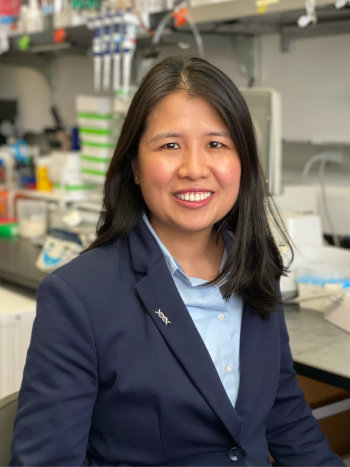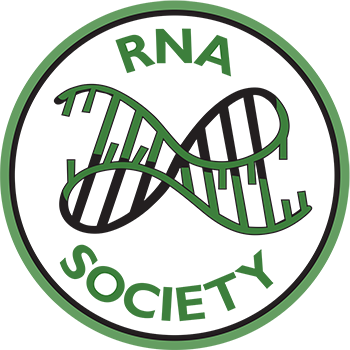Dr. Diana DouWritten by: Dr. Paula Petronela Groza Posted: March 26, 2025  Let’s wish Dr. Diana Dou the best of luck as she embarks on the professorship journey by starting her own group at the Department of Integrative Immunobiology at Duke University in the USA. Dr. Dou is a passionate researcher fascinated by the role of lncRNAs and RNPs in autoimmunity. Since the beginning, Dr. Dou's career has revolved around RNA. She began her research experience as an undergraduate student researcher at Caltech, in the lab of Dr. Mark E. Davis. There she studied chemical modifications of siRNAs, tracking the spread of RNA between cells and nonviral delivery of RNA molecules into cells. She later enrolled in the National Institute of Allergy and Infectious Diseases (NIAID), NIH Postbaccalaureate Intramural Research Training Award (IRTA) program, which is a fellowship program at the National Institutes of Health (NIH). Being an IRTA scholar was a unique experience because it showed her how research is done in a governmental institution. There, in Dr. Anthony Fauci’s lab, she learned how to communicate complex concepts in general terms and ‘how not to get lost in the weeds.’ Another thing she kept with her from Dr. Fauci was the idea of keeping the big picture of why the question was important, a method he used to call the ‘20,000-foot view’. This method helped her to maintain focus and motivation, and she recommends college graduates to apply for this program if they want more biomedical research experience. Shortly after this, she began her graduate studies in Molecular Biology in Dr. Hanna Mikkola's lab at the University of California in Los Angeles. She met Dr. Mikkola several years before at Caltech at an event Dr. Dou organized, which brought together representatives from industry, government, and academia to discuss the current state of stem cell research: ‘If you’ve ever heard Hanna speak about science, you’ll know why she was an amazing choice.’ As a graduate student, Dr. Dou studied the ‘Regulation of human hematopoietic stem cell (HSC) self-renewal by the HOXA cluster.’ She recalls that she ‘was especially interested in gene regulatory networks, so studying the gene regulation and [gene] expression that created and maintained the definitive HSC state was a great fit.’ At the end of her graduate studies, she ventured into the intergenic peaks from her RNA-seq datasets, which proved to be lncRNAs. This led her to Dr. Howard Chang’s office at Standford University. Within Dr. Chang’s lab, Dr. Dou worked on establishing the role of Xist lncRNA in autoimmunity, showing that ‘Xist RNPs promote a higher background of autoimmunity.’ Their study was unique because they “didn’t just look at the Xist RNA alone; [they] looked at the Xist RNP complex and how Xist may have additional, perhaps unintentional, effects on other biological processes. Xist is noncoding and necessarily functions within a complex of protein binding partners and assembles to the appropriate genomic location to epigenetically silence the X chromosome. So, in acting as a molecular scaffold for the proteins required for X chromosome silencing, the complex it forms also happens to be densely packed autogenic particles with a high potential of triggering autoimmunity.” This discovery sparked even more curiosity, raising many more questions that Dr. Dou is looking forward to answering. She beautifully describes the lncRNAs as “the dark matter of the genome, the previously invisible structural architects of the genomic universe that we are only now beginning to truly see with the help of rapidly evolving technologies.” She considers that “it will take a concerted multidisciplinary effort involving many intersecting biomedical fields to fully explore the roles of lncRNAs/lncRNA-RNPs in autoimmunity, and I’m so excited to be starting my lab at this particular time in history.”
The keyword that defines Dr. Dou's journey is persistence – she enthusiastically confesses that to obtain Figure 1C for her Xist paper, it took 6 months of optimization, changing a small part of the protocol every day to make it work, “I didn’t give up on the Xist FISH because I knew it would work based on our qPCR results.” Finally, she had her proudest moment: “When I saw the punctuates lighting up in the female control and the induced transgenic Xist male mice while the un-induced male mice stayed dark, that was one of the proudest moments of my entire scientific career.” However, this was not her biggest achievement. Her great success so far was overcoming the fear of public speaking: “I realized that there was no way I could be the best scientist I could be without sharing my research and ideas: Science un-communicated is science un-performed.” She overcame her fear by volunteering to give presentations and talks and attending networking events. Nowadays, she truly enjoys “presenting and sharing [her] research, meeting new people, and hearing new ideas” and finds that improving her communication skills has been critical to every success she has had during her career because it opened doors that otherwise would have remained closed and shaped her thinking. Thus, it is not surprising that she finds all the researchers she has worked with inspiring and being ‘as diverse as RNAs in the transcriptome.’ She admires each scientist’s perseverance that leads to discoveries and the courage to live a life where ‘struggle is a certainty.’ Moreover, she exclaims how much she loves having scientific conversations in all random places, which ‘always lead to extraordinary ideas.’ One challenging aspect of her career was obtaining funding for her postdoc, as her background differed from the proposed postdoc project. She prepared rigorously for applying to different funding sources and considering the advice of her fellows from the Chang lab, like starting early, having people review your drafts, and keep revising. Despite all these efforts, her first application for the K99 grant was rejected. However, her persuasion and perseverance finally broke through, and she received the funding. Thus, her advice for other scientists applying for grants is: “If you believe in your vision, apply and reapply, and apply to other grants.” However, she admits that the most significant challenge she faced in her career was maintaining her motivation, particularly in the early years of her postdoc, because ‘nobody seemed to believe I could do the projects I proposed.’ This experience made her realize, ‘It’s important to stay focused without getting tunnel vision.’ Considering her own struggles, she felt the need to get involved more in helping her fellow postdocs, ‘who exist in this transitional limbo between students and staff’ and often struggle with navigating the mental health system. With the help from Praxis and the Standford Postdoc Association, she put together an event that shed light on topics like on-campus resources and insurance benefits, thus guiding the postdoc towards different sources of support. On a more local level, within Dr. Chang’s lab, as a senior researcher, she had the task of taking care of her junior fellows and ensuring they felt seen. Now that she steps into the group leader role, she prepares herself by taking one step at a time and by trying to rest well enough to have the energy to deal with whatever the future has in store for her. She acknowledges that she will miss her friends at Standford and the lab work, feeling like the computer is eating up her time nowadays. Despite this, she always tries to remind herself to enjoy the moment because no matter how intimidating the transition is, it is also what she has been working on for a long time. She is thus trying to apply, ‘the best advice (I) ever heard’ - something her personal hero, Pat Summitt, the legendary women’s basketball coach, would say to her players, “Left foot, right foot, breathe.” Thus, she advises others to: “Do as much as you can do every day and accept that [it] will look different every day. When you don’t get as much done as you feel you should have, take a beat and forgive yourself. You don’t have to work to your utmost limit every single time for every single task, just as you can’t try to set a personal record every single time you go to the gym to exercise—that only invites injury. Keep taking steps one at a time, and don’t forget to breathe.” After many years of working on RNA, she finally attended her first RNA Society Meeting in Edinburgh in 2024. The first thing she noticed was ‘how close-knit the society is,’ and the attendance made her happy because she could catch up with old friends who introduced her to new ones. She admits it is difficult for her to pick only one favorite event, but the young investigator's ‘pub crawl’ was the winning event. When it comes to her favorite RNA, Xist is by far the correct answer because it ‘truly stands alone,’ and ‘just a couple hundred molecules of Xist can silence an entire chromosome!’ – ‘What other RNA does that without even needing to be translated to a protein?’ Her favorite RNA Journal depicts a recently developed method for depleting rRNA, ‘A scalable and cost-efficient rRNA depletion approach to enrich RNAs for molecular biology investigations.’ Besides this method being ‘useful, clever, and economical,’ this article comes from Dr. Grace Chen’s lab at Yale University who happens to be both a friend and mentor of Dr. Dou’s. Thus, it is exciting for Dr. Dou to celebrate her friend's success! If you feel inspired by her and want to explore the role of Xist and other lncRNAs in autoimmunity alongside her, now is your chance! She is hiring at all levels for her brand-new lab. You can reach her on LinkedIn or X. However, the best way to contact her is via e-mail. |
